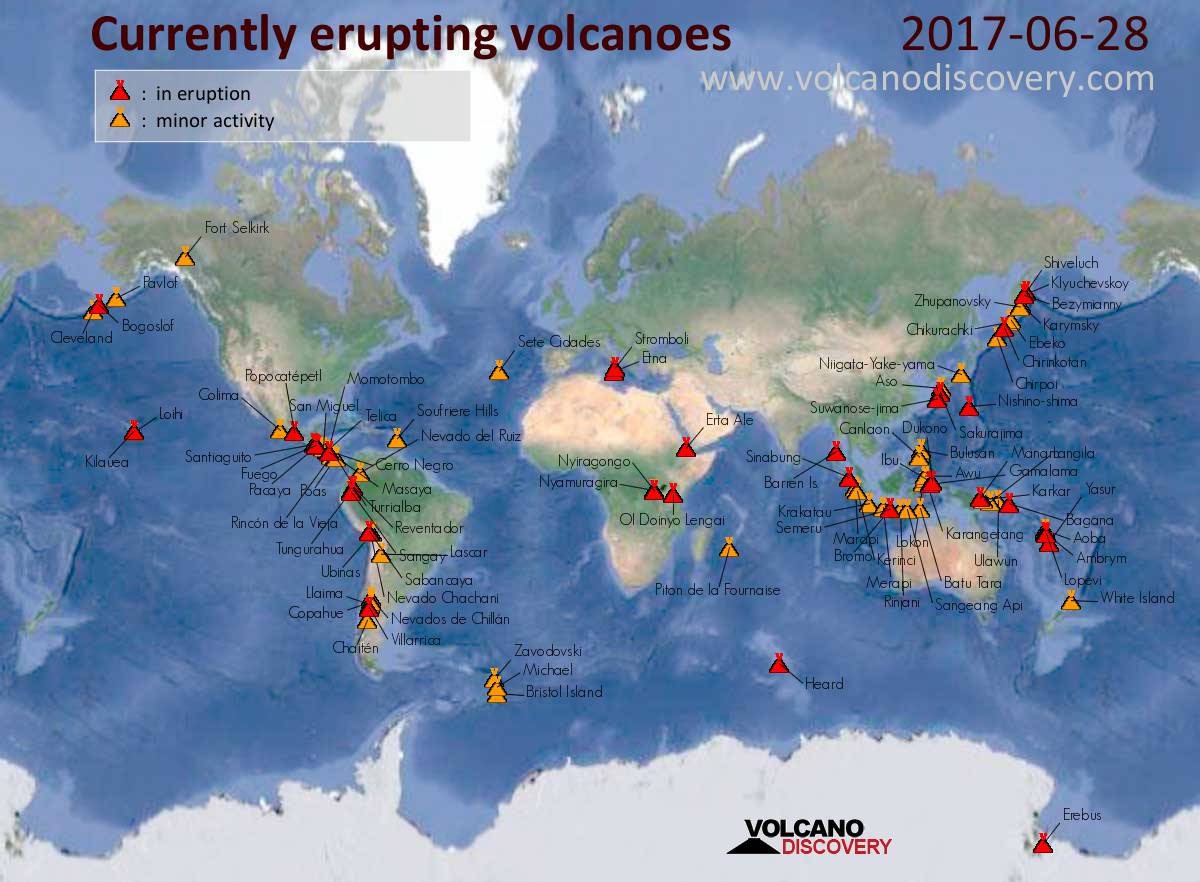angelburst29
The Living Force
Re: More volcanic eruptions
Campi Flegrei is one of world's most dangerous super volcanoes, and now scientists warn that it has reached critical phase and could erupt, which would mean apocalyptic consequences.
Scientists warn: Super volcano has reached critical phase
http://speisa.com/modules/articles/index.php/item.3545/scientists-warn-super-volcano-has-reached-critical-phase.html
A super volcano is defined as a volcano that is able to sling more than than 1,000 cubic kilometers of mass into the atmosphere.
By comparison, one of the most violent eruptions in modern times, Karakatau in 1883, erupted with some 30 cubic kilometers "ejekta".
The result of such large amounts of dust, ash and gas in the atmosphere are equivalent to a so-called nuclear winter: Damaged crops, food shortages, poisoning and general societal collapse.
Two days before Christmas Eve, a research report was published in the science magazine Nature Communications, where they do not hold back:
There are chances that Campi Flegrei is about to erupt. And even worse: It is possible that the dormant super volcano will go into a so-called critical phase.
The first, and perhaps biggest problem is that Campi Flegrei is located just off the city of Naples in Italy, and that around half a million people live more or less directly above the volcano.
The second is that Campi Flegrei is huge. Very big. Unlike several other super volcanoes, Campi Flegrei is not a classic mountainous-shaped hill.
Large parts of the volcano is actually submerged in the Mediterranean, and in total it consists of 24 craters, several geysers and large warm areas.
The name Campi Flegrei actually means "burning plains", and the caldera, or crater, is an entire 7.5 km in diameter.
The largest eruption occurred about 200,000 years ago and led to large climate changes throughout Europe. Since, Campi Flegrei has had several eruptions, for 40,000, 35,000 and 12,000 years ago.
The eruption 40,000 years ago is tied to the extinction of neanderthals, although it is difficult to ascertain something that happened so long ago.
Now Italian authorities have upgraded the threat level from green to yellow, which in practice means that the volcano is to be monitored.
And much more it is no possible to do. The power of a super volcano is so large that any human efforts and countermeasures will amount to nothing.
All we can do is wait, and hope the apocalypse doesn't happen any time soon, because after all, we are living on a bomb.
Campi Flegrei is one of world's most dangerous super volcanoes, and now scientists warn that it has reached critical phase and could erupt, which would mean apocalyptic consequences.
Scientists warn: Super volcano has reached critical phase
http://speisa.com/modules/articles/index.php/item.3545/scientists-warn-super-volcano-has-reached-critical-phase.html
A super volcano is defined as a volcano that is able to sling more than than 1,000 cubic kilometers of mass into the atmosphere.
By comparison, one of the most violent eruptions in modern times, Karakatau in 1883, erupted with some 30 cubic kilometers "ejekta".
The result of such large amounts of dust, ash and gas in the atmosphere are equivalent to a so-called nuclear winter: Damaged crops, food shortages, poisoning and general societal collapse.
Two days before Christmas Eve, a research report was published in the science magazine Nature Communications, where they do not hold back:
There are chances that Campi Flegrei is about to erupt. And even worse: It is possible that the dormant super volcano will go into a so-called critical phase.
The first, and perhaps biggest problem is that Campi Flegrei is located just off the city of Naples in Italy, and that around half a million people live more or less directly above the volcano.
The second is that Campi Flegrei is huge. Very big. Unlike several other super volcanoes, Campi Flegrei is not a classic mountainous-shaped hill.
Large parts of the volcano is actually submerged in the Mediterranean, and in total it consists of 24 craters, several geysers and large warm areas.
The name Campi Flegrei actually means "burning plains", and the caldera, or crater, is an entire 7.5 km in diameter.
The largest eruption occurred about 200,000 years ago and led to large climate changes throughout Europe. Since, Campi Flegrei has had several eruptions, for 40,000, 35,000 and 12,000 years ago.
The eruption 40,000 years ago is tied to the extinction of neanderthals, although it is difficult to ascertain something that happened so long ago.
Now Italian authorities have upgraded the threat level from green to yellow, which in practice means that the volcano is to be monitored.
And much more it is no possible to do. The power of a super volcano is so large that any human efforts and countermeasures will amount to nothing.
All we can do is wait, and hope the apocalypse doesn't happen any time soon, because after all, we are living on a bomb.

